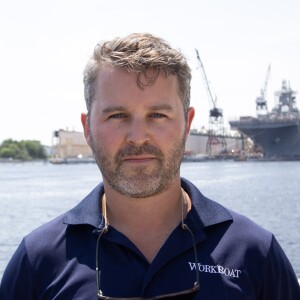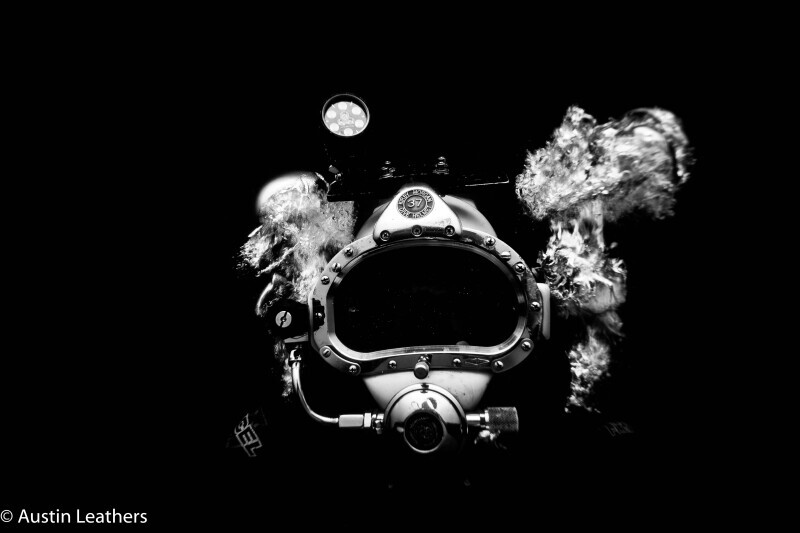WorkBoat interviewed Austin Leathers, a freelance photographer and deep-sea diver, to explore his perspective on the commercial diving industry showcased in his photography.
Leathers works on various projects in New England waters. These projects range from removing beaver dams with hydraulic chainsaws to diving within hydro-electric power plants. Early in his career, alongside his passion for diving, Leathers had a true interest in filmmaking, particularly in black and white cinematography.
WB: What initiated your passion for subsea photography?
AL: I just enjoy documenting the daily life of diving and the people I’ve worked with. Nobody’s really documenting divers like this, so feel that I need to do it. I have family, friends and coworkers saying ‘You have to continue taking these pictures, it’s such a unique viewpoint and position that you have.’
When you dive every day it becomes ordinary. To me it’s nothing new, but it is such a unique position to be a photographer and a diver at the same time. That’s my spin on it, in order to provide the most accurate representation of what it’s truly like to be a commercial diver, I think you need to be one.
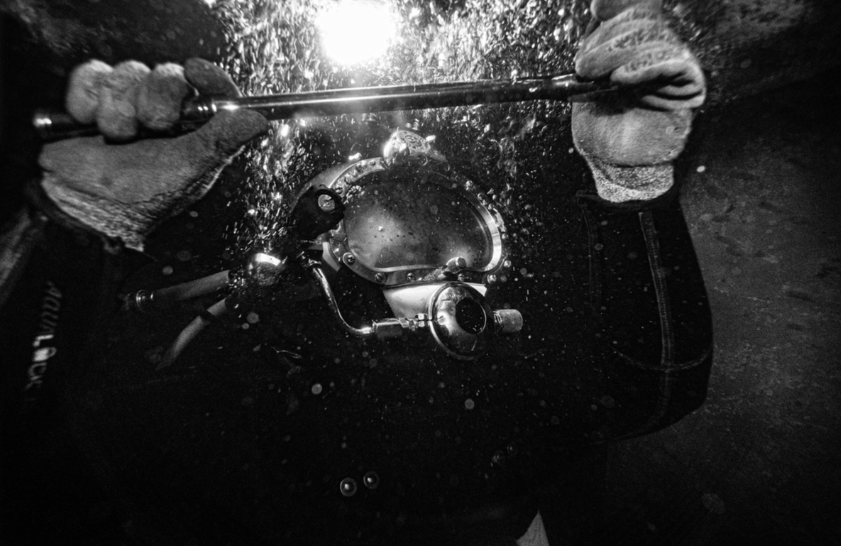
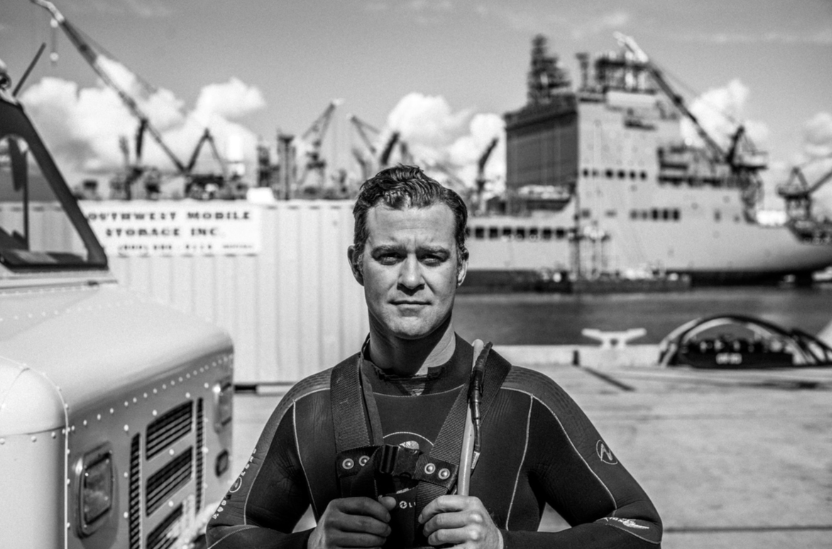
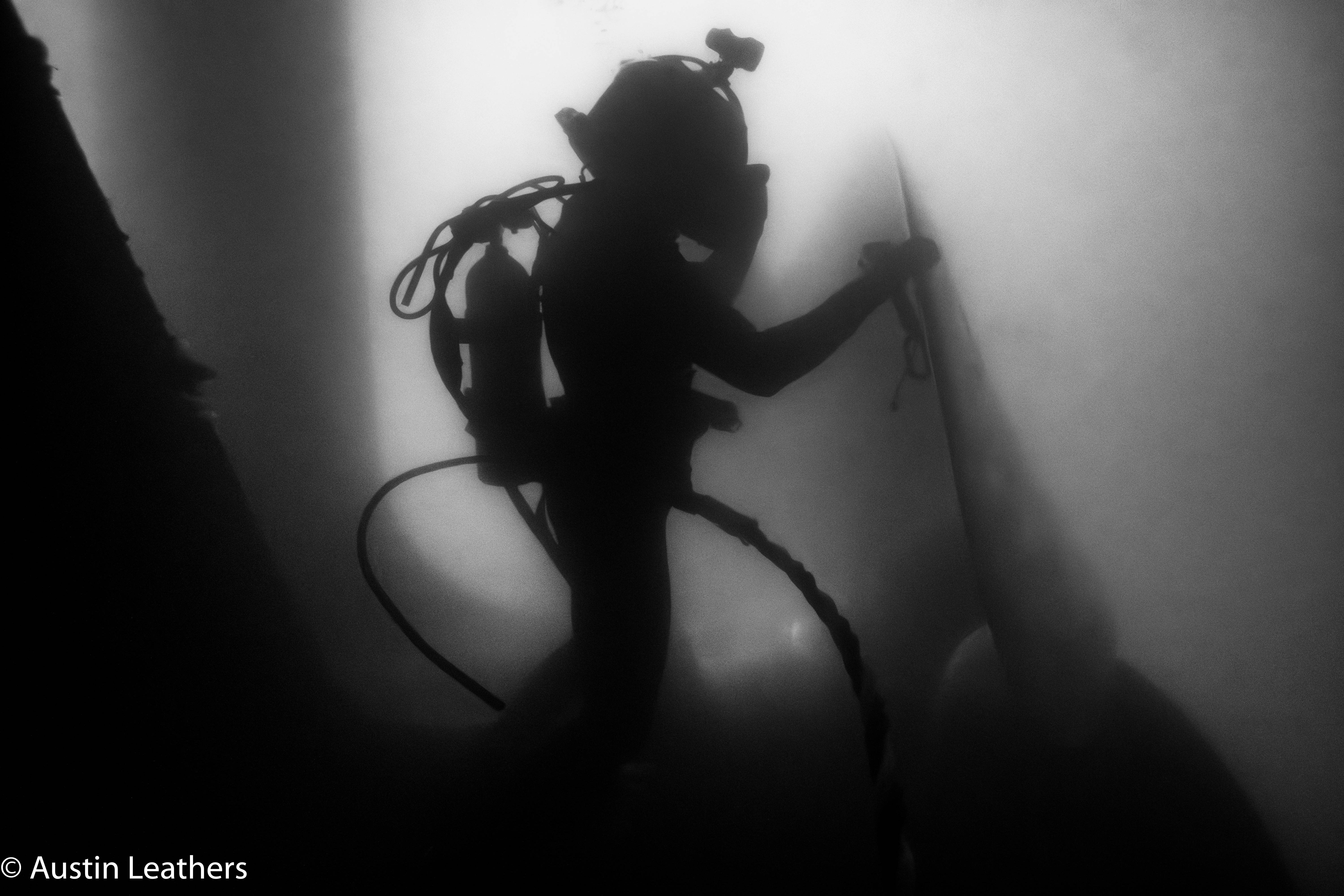
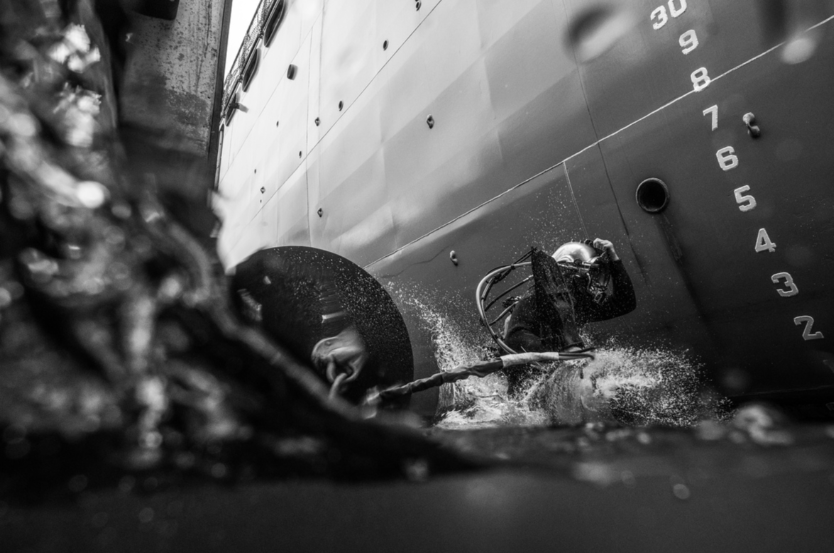
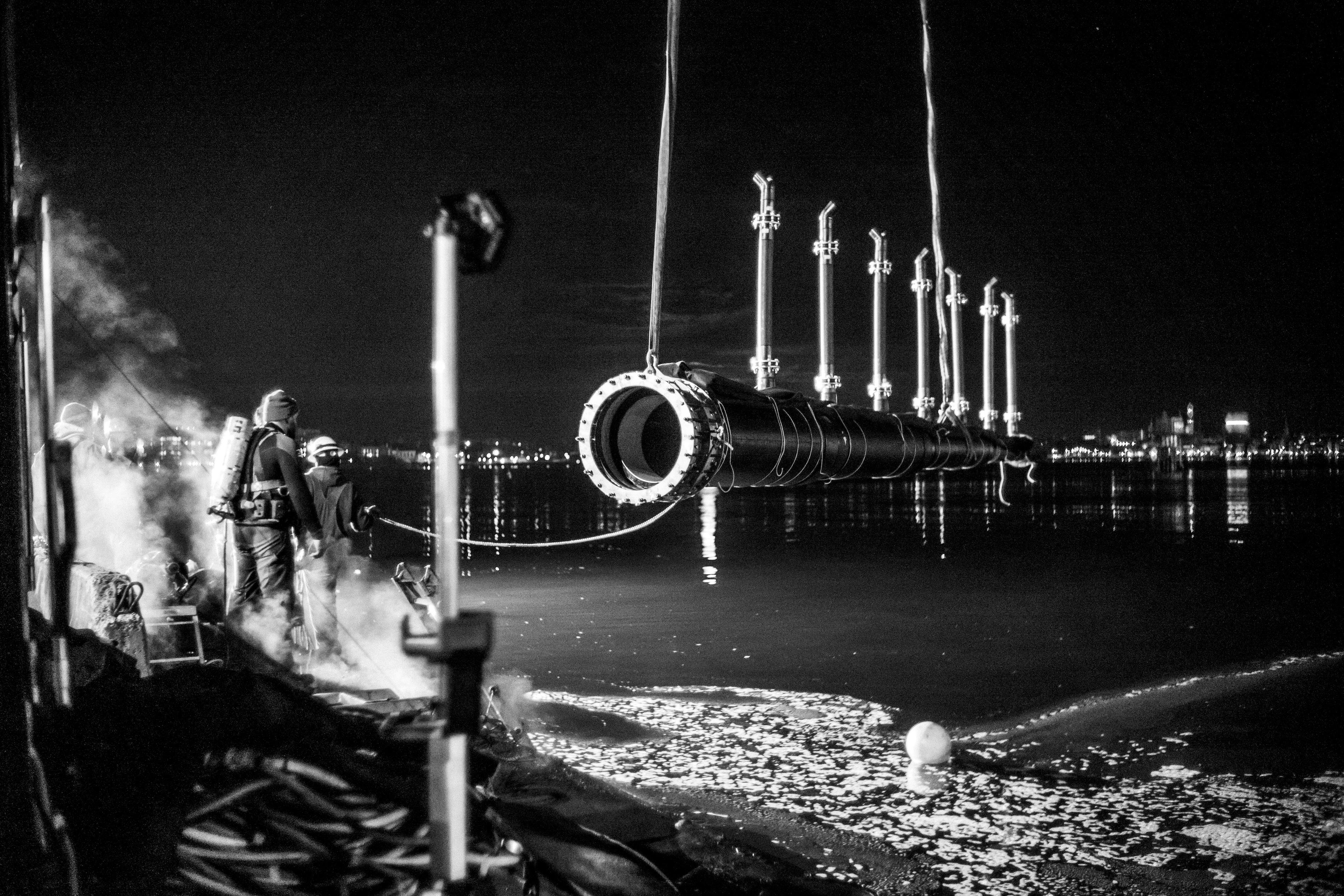
WB: How did you become a commercial diver?
AL: I was always fascinated with the mystery of the world underwater. I loved watching Jaques Cousteau movies and other adventure type films and documentaries, especially old black-and-white movies. Growing up near Syracuse, New York, I didn’t have access to anything to help me get into diving. My uncle Dave got me into snorkeling the lakes and rivers to fill our tackle boxes with lures people lost at popular fishing sites, and then I had a gym teacher, coach Carl Sanfilippo who taught me scuba diving.
We started out in my high school pool in Baldwinsville, New York. As I progressed through the classes we started diving in Lake Skaneatlas. After that, I ended up joining the Navy in 2006 as a welder/diver, a Hull-technician diver back then, so that’s how my journey started. I was active duty in the Navy for nearly 10 years, and became a commercial diver in 2015 working as a civilian diver for the Navy and some smaller contractors in the last few years.
WB: What’s your process? What’s it like shooting images 70’ below the surface?
AL: I have a theme that it's not about one specific person. I'm trying to portray what it’s like working at that depth. I'll dive on different jobs and think, ‘Wow, this would be a cool shot', or we’ll be working on a different type of job and I think, ‘This is interesting, nobody's probably ever heard of this.’
The current camera that I'm using for underwater is a Nikon in an Ikelite housing. It’s not a crazy expensive camera. But it has a really good autofocus. I use a wide-angle lens. You’re really shooting at 21 millimeters or less. And it’s up close and personal to the divers. On the surface, I shoot a variety of film and digital cameras, such as Leica M10 Monochrome and my grandfather's old Minolta XD11 35mm film camera.
Water quality comes into play. We’re in New England, it's not Fiji. That visibility affects the images a lot. At first, you’re frustrated because it isn’t clear, but at the end of the day, you’re telling a story that’s more accurate. That’s what it's really like in the water. A lot of times there's zero visibility, all you feel is your hand and an object in the water, so a lot of my pictures are really close because of the water quality. I’m almost touching people’s faces with the camera lens. And black and white is kind of my thing, it is the essence of photography in my opinion. I’m not really into color photography because it very busy and distracts the viewer and myself of whats really important in a photograph.
Down there, it’s also extremely calming. It can be dangerous, but when you are in the water for so many hours or most of your life it becomes second nature. Yes, there are always accidents that are going to happen, but for the most part it's very peaceful.

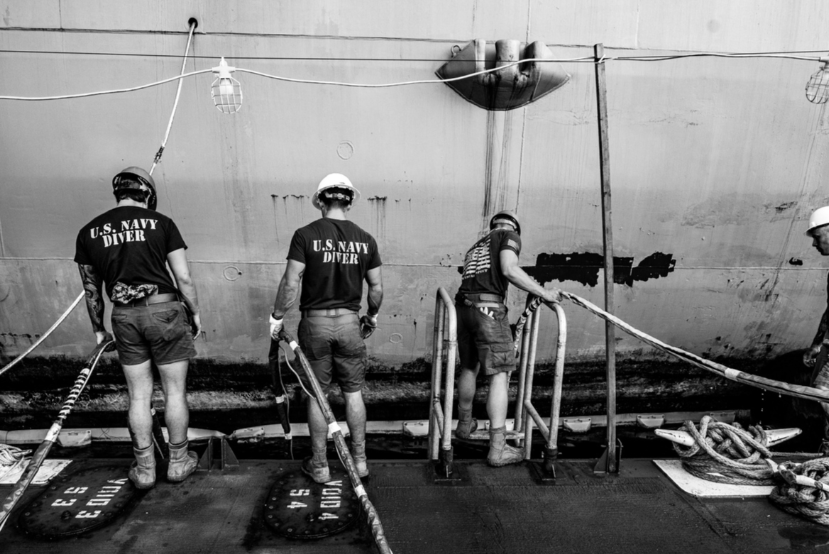
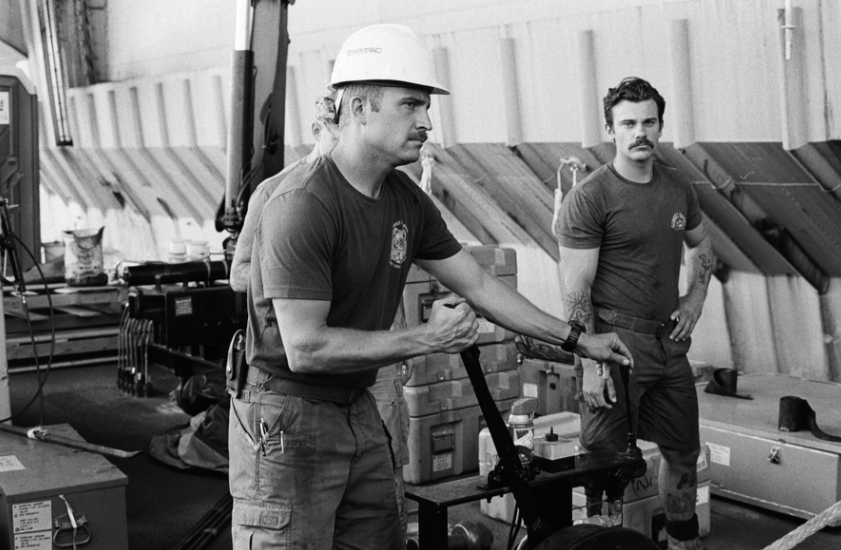
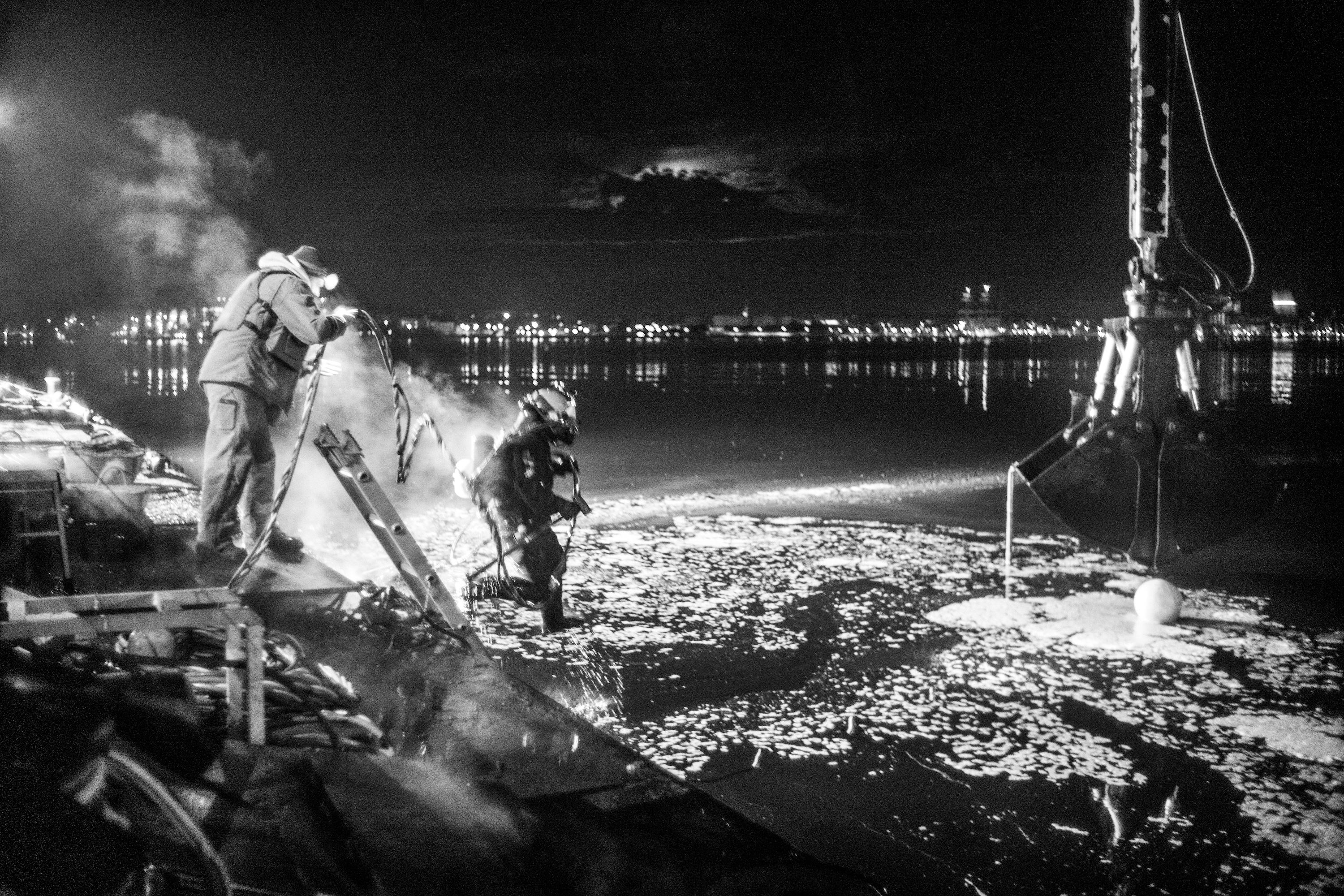
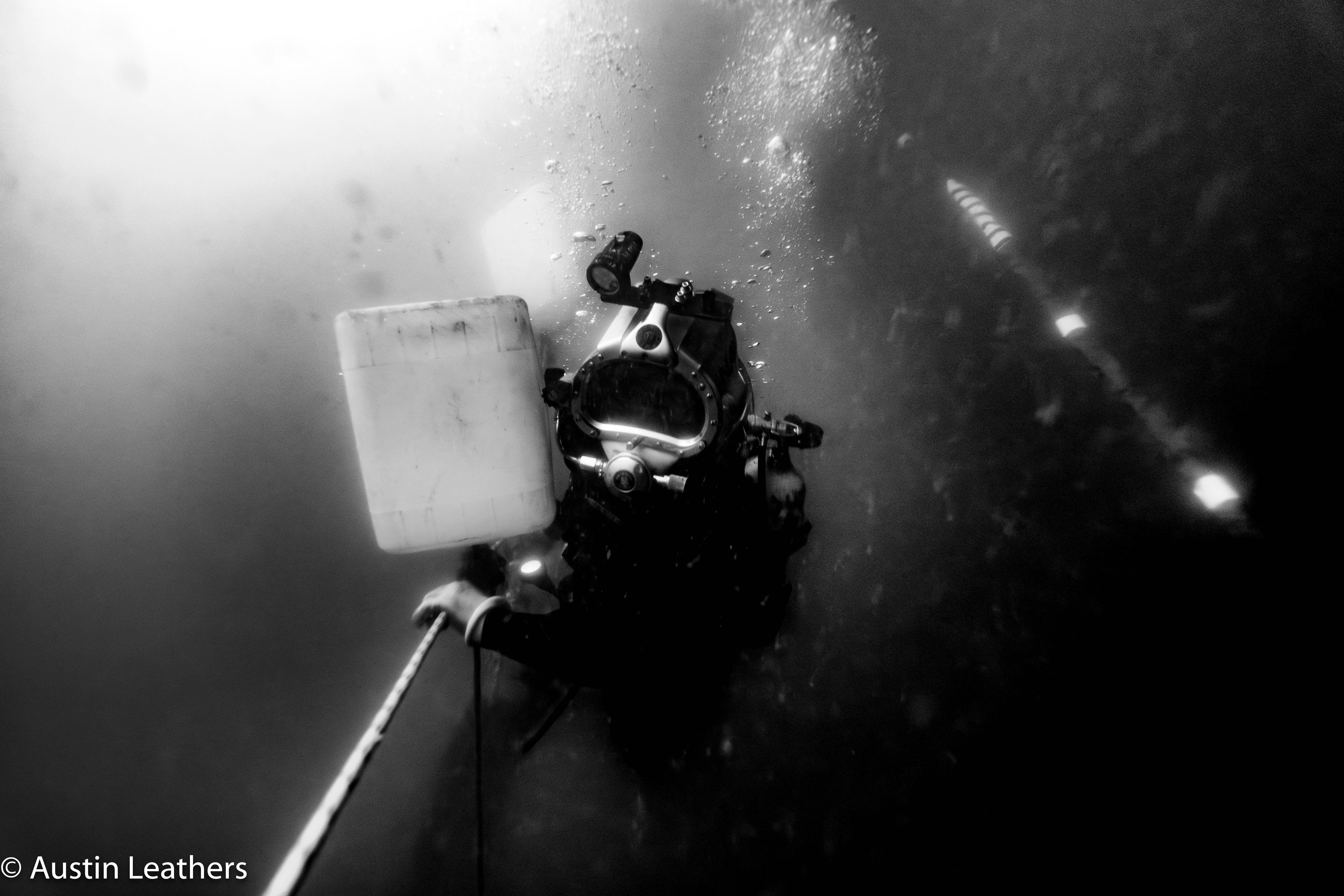
WB: What is it about people in this industry that you want to capture? What are some future projects that you're working on?
AL: I want to continue documenting hardhat divers. Plus, there are so many people that work in and around the water. Nobody’s documenting these guys. We get different contracts all of the time.
We have worked with Northstar Marine, inspecting or removing debris from their ships. They are doing all of this wind farm work so they need their vessels ready to go. But you get to meet the crew and see all of these deckhands and captains. I have also worked with Mohawk Northeast in Groton, Conn. on many jobs from debris removal on their tugs, barges that have sunk to 60', and sailboats that wash up on the beach.. They have all sorts of tugs and barges and are a great group of guys.
We’re working with Harbor Works in New London, Conn., they are pile drivers. They use a floating barge and cranes to build piers. And it’s all interesting stuff! So much so that I think I will expand my project to document pile drivers on the water.
Here’s an example of an interesting character. There’s a guy named Josh, he lives on a sailboat and he put a lot of his money into buying a crane and a floating barge just trying to make it happen. And it just so happens that he’s got one leg.
I mean, think about it, where does your marina come from? Who builds it? Divers, welders, pile drivers, tugboat crews. These are all super interesting people with their own stories.
A lot of these people can be standoffish to outsiders, so it’s good to be in the industry, to know them. I am part of this industry telling our story from the inside-out, not the outside-in which is very critical to portraying the work and individuals involved correctly. Knowing that I’m a commercial diver, they’re a lot more comfortable when I am photographing them.
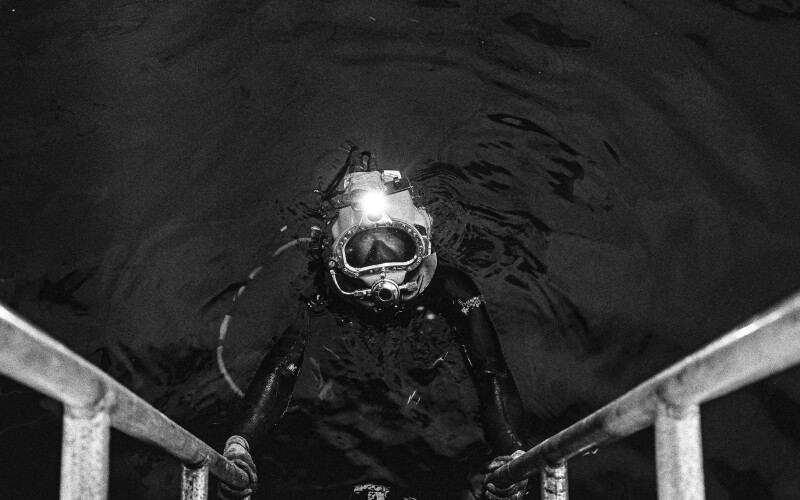
WB: How can people support your work?
AL: I sell prints on my website. I started getting into alternative processes of photographic print making which is basically any process that isn’t just printing from a computer. I have made salt prints and silver gelatin prints made in the darkroom. So, I’m taking modern technology, a digital camera and printer and printing digital negatives to then use techniques from the 1800s and make silver gelatin prints like back in the film days. So I’m switching back and forth between past and modern.
I would really love to have a show or a gallery where people would come in person and see all the commercial diving and maritime industry photos that I've taken over the years.
Another way to support my work is through my Instagram.
View this profile on InstagramAustin Leathers (@austinleathersphoto) • Instagram photos and videos



